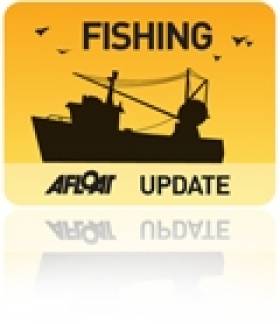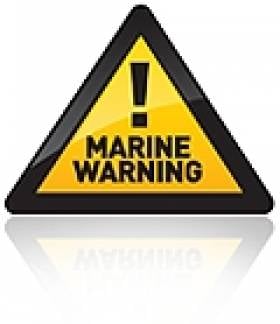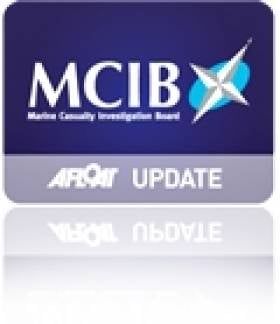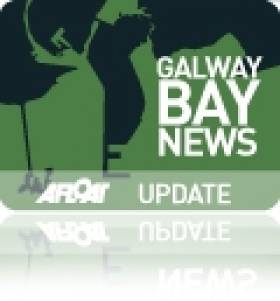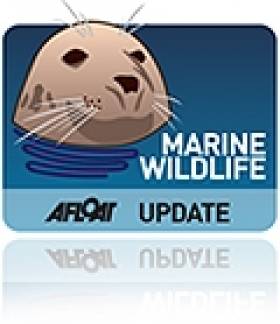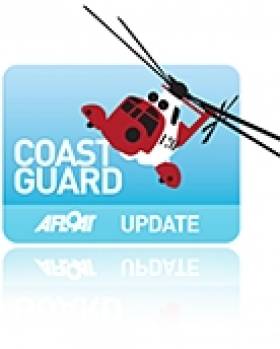Displaying items by tag: Galway
Deadliest Catch Star Warns of Threat to Small-Boat Fishing
The Common Fisheries Policy will wipe out coastal communities in Ireland, according to a star of TV's Deadliest Catch.
Corey Arnold, who was in Galway today to speak at the Irish Skipper Expo, has spent time working with small-boat fishermen in Donegal and Mayo as part of a Pew Environment Group project to document the state of Europe's fishing industry.
He told The Irish Times: “It struck me that these people have a great opportunity to land top quality, sustainably caught fish, but they get no real encouragement under current management policies."
Arnold emphasised that smaller boats "barely get enough quota to survive, compared to the much larger vessels which get most of the quotas and can discard up to 50 per cent of their catch.”
The American, who is a photographer and seasoned salmon and crab fisherman, said fishery management practice in Alaska offered lessons for Europe.
Cruise from Kinvara to Tahiti Wins Sailor of the Month Award
Recognised by the senior offshore sailing organisation, the Irish Cruising Club, with the award of the historic Faulkner Cup, the Quinlan's achievement is further enhanced by the fact that, in their determination to acquire a boat suitable for long distance voyaging, they built their steel-constructed 40ft cutter Pylades themselves, launching in 1997.

They have brought a lively and enquiring eye to the complex project, something which reflects Fergus's qualifications as an architect. As he has drily observed himself, there isn't a lot of work around for architects in Ireland at the moment, so everything clicked with the boat sea-tested and ready to go off on this sail of a lifetime.
Having left Kinvara in June 2009, their longterm plan is a global circumnavigation, returning to Galway Bay in August 2012. Quite what Ireland will be like by then is anybody's guess. But as it is, the crew of Pylades have enough to be getting on with in dealing with the vagaries of the open ocean, and the volatile political situation in some of the areas where ocean voyagers go. For armchair sailors at home, their thoughtful and entertaining reports on their experiences make them worthy "Sailors of the Month".
New Sports Centre To Provide Greater Access to Galway Bay
This weekend sees the opening of the new Galway Ocean Sports Centre, which aims to provide a home for water sports enthusiasts with access to the city and Galway Bay.
The Galway City Tribune reports that the 25,000 sq ft premises will provide facilities for up to 20 clubs and organisations in the city, with meeting rooms, showers and space for equipment storage.
"The big thing about this is that it will make water sports more accessible to children and adults,” said centre co-ordinator Johnny Murphy.
The Galway City Tribune has more on the story HERE.
Coastal Flooding Risk Warns Irish Water Safety
Flood conditions expose the public to hazards they need to be aware of. Fast moving water can exert pressure of up to four times its speed against the legs of someone attempting to cross it. Because water displaces bodyweight, the deeper a person becomes immersed the less the person weighs so the more difficult it is to remain upright. Never put ones feet down if swept away in floodwater, because foot and body entrapments and pinning are the leading cause of accidental death in rivers and fast flowing water.
Motorists need to be vigilant to avoid flooded areas on roads but particularly near rivers; with poor light and short days it is not possible to determine the depth of floods easily. Swift water will carry cars and other vehicles away and there have been very tragic drownings in the past as a result.
Children are naturally curious about water, therefore parents should caution them that floodwater hides the true depth and that manhole covers may be open and that small streams when swollen are very fast and deeper than normal.
What should I do when I hear a Flood Warning?
· Listen to the national and local radio for met eireann updates and AA Road watch updates
· Check on neighbours particularly if they are elderly, infirmed or families with young children
· Move your vehicles to higher ground
· Move animal stock to higher ground
· Check your small craft to ensure they are well secured or moored
· Make sure you have warm clothes, food, drink, a torch and radio.
· Block doorways and airbricks with sandbags or plastic bags filled with earth. Floodgate products will also work effectively.
· Switch off gas and electricity supplies if flooding is imminent.
· Check the time of High Water in the Newspaper or on http://easytide.ukho.gov.uk/EASYTIDE/EasyTide/SelectPort.aspx
· Check out www.flooding.ie for more detail on General flooding
Personal Safety
· Avoid flood waters at all times
· carry a mobile phone at all times in case you need to call for help - call 112 in emergency
· Wear suitable protective clothing & a lifejacket on or around water
· Do not enter fast flowing water.
· Never put your feet down if swept away by fast flowing waters
· Flooding on roads will be deeper at dips and around bridges.
· Stay away from sea and flood defences.
· when walking or driving, be aware of manhole covers and gratings that may have been moved due to the heavy flow of water.
· Take care when using electric appliances in damp or flood conditions.
· Remember that during the hours of darkness the dangers are multiplied.
After the flood
· Avoid eating food that has been in contact with flood water.
· Run water for a few minutes and wash your taps.
· Check gas and electricity supply.
· Leave wet electrical equipment alone to dry and have it checked prior to use.
· Ventilate your property well.
· Check on elderly neighbors.
New Ocean Centre to Open in Galway
The centre will provide facilities for all the watersports organisations in the city and region and is located in the new Galway Harbour Enterprise Park adjacent to the new harbour slipway that was built specifically for the Volvo Ocean Race in 2009. The 25,000 sq ft premises is being provided by Cold Chon (Galway) Ltd for a nominal rent and the land is being provided free by Galway Harbour Company.
Some of the clubs that have already committed to this new facility include the Galway Sea Scouts, Galway Sea Sports Association, Galway Sub Aqua Club, Bádoiri an Cladaigh, OYTI, Galway Coastal Rowing, Kayak Mor and Galway Bay Sailing Club.
'The Harbour Company is pleased to assist in pulling together the various water sport bodies under one roof and in the heart of the harbour. The new facility and the recently constructed slipway will be the focal point for Galway's marine leisure, getting Galwegians afloat and established in the city, commented Harbour Master', Captain Brian Sheridan.
The Centre is also hosting Let's Do It Global which ran the very successful Green Dragon campaign and the Galway Volvo Ocean Race Festival. The team is now working towards hosting a spectacular finish to the Volvo Ocean Race 2011-12 in July 2012.
The centre will provide operational facilities such as offices, changing rooms and storage facilities. There will be no social amenities or bars at the centre however it is anticipated that the establishment of the centre will provide impetus for attracting further watersport events to Galway.
The launch will take place at The Galway Ocean Sports Centre, Galway Harbour Enterprise Park, Galway City.
Currach Man Died after Falling Overboard - Report
Ferry Link Could Halve Journey from Burren to Galway
Galway city could see a new ferry link with the Burren in Co Clare, pending a feasibility study.
The proposed 'Ballyvaughan Bay Hop' ferry could see the travel time between the two locations halved, and could be ready to go by early next year.
The Ballyvaughan area is just across the bay from Galway city but by road is almost 50km away.
The ferry link could breathe new life into the popular tourist spot, connecting with greater employment opportunities, according to spokeswoman Gwen Ryan.
The Irish Times has more on this story HERE.
New Pontoon Key to Saving Stranded Whales, Dolphins
A new pontoon intended to refloat marine animals such as beached whales and dolphins along the Atlantic seaboard was demonstrated at the weekend ahead of the Galway Science & Technology Festival.
The Irish Times reports that divers, scientists and local volunteers were among those participating in the training exercise on Gurteen beach, near Roundstone, which involved rescuing and refloating a dummy pilot whale.
Dr Simon Berrow of the Irish Whale and Dolphin Group (IWDG) which ran the exercise said he hoped other coastal communities would follow the example with their own training sessions, given the growing number of strandings along Ireland's west coast.
The new pontoon - which was put on display in the festival exhibition at NUI Galway on Sunday - was purchased with funds raised by the local community and a BBC television team producing the latest series by popular adventurer Monty Halls.
Ireland is Home to a Basking Shark Population
Coast Guard Urges Public Not to Go Out on Exposed Piers
The Irish Coast Guard service today issued an important warning to the public about high winds, gales and flooded areas. This warning comes following a weather warning and a strong gale warning issued by Met Eireann today. Southwest winds veering westerly will strengthen during this afternoon with stormy conditions becoming widespread.
Speaking today, Chris Reynolds Director of the Coast Guard said: "The public is strongly advised not to go out on exposed coasts, cliffs, piers, harbour walls, beaches, promenades or any other coastal areas. The principal dangers from this weather system will be due to gusts of 100 to 140 km/hr expected with the most severe in exposed parts of Ulster and Connacht. Showers will be heavy and thundery at times merging to give longer spells of rain in the north. Highest temperatures 9 to 11 degrees. Huge waves can be whipped up by high seas. These waves can pose hazards to anyone close to the shoreline. In coastal waters, rough seas are often the cause for capsizing fishing vessels. Some of these accidents can take place so quickly that there is no time for the crew to send out distress signals."
He continued: "Do not attempt to cross at fast running river or flood water fords as they may be stronger and deeper than you think. Flooded urban areas may contain many hazards, not least of which include submerged open manholes and downed power lines. The combination of tides, forecasted gale warnings for the next day or so, high sea conditions and swollen rivers may result in very dangerous conditions. Remember to monitor weather broadcasts when travelling and heed the advice of the RSA on road use during severe weather and high winds ."
Specific advice from the Coast Guard today is:
· Stay away from the shoreline and do not engage in water sports;
· Owners of small vessels and fishing vessels in coastal waters should seek shelterand secure them properly with moorings;
· Ships in the open sea should take heeds of weather forecasts and warnings and avoid the sea area with the most treacherous conditions.
Mr. Reynolds ended by saying: "If you do see someone in difficulty in the sea, on the shore, cliffs, lakes or rivers dial 999 or 112 and ask for the Coast Guard. "


























